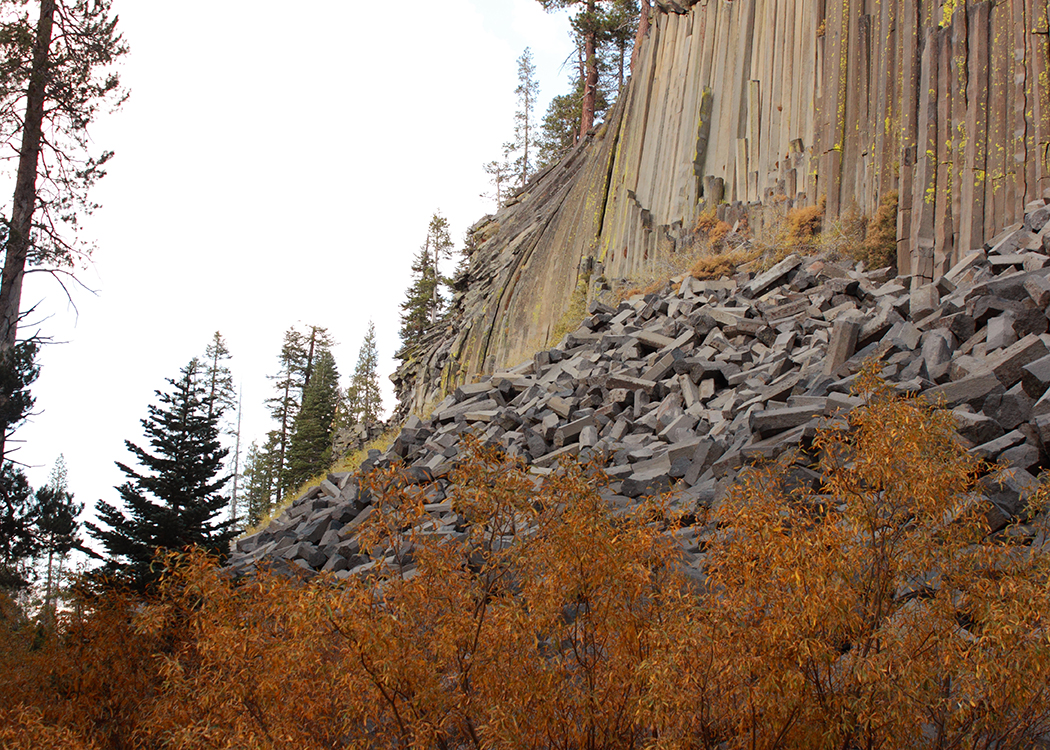Every knock at my door is a special occasion, either because someone I have invited has arrived, or because someone has come to surprise me! In this case, it was my brother, Woodchuck, who had driven all the way from Beaver to spend Lastleaf with me!
Lastleaf is a puzzling holiday to spend in southern California. Like Firstbud, the holiday requires a riparian environment and colors in the trees, but the primary color of an Angeleno autumn is brown. “No matter,” said Woodchuck. “I’ll bet the leaves will be better up north!”
By purest coincidence, his idea perfectly matched my interest in visiting Devils Postpile National Monument!
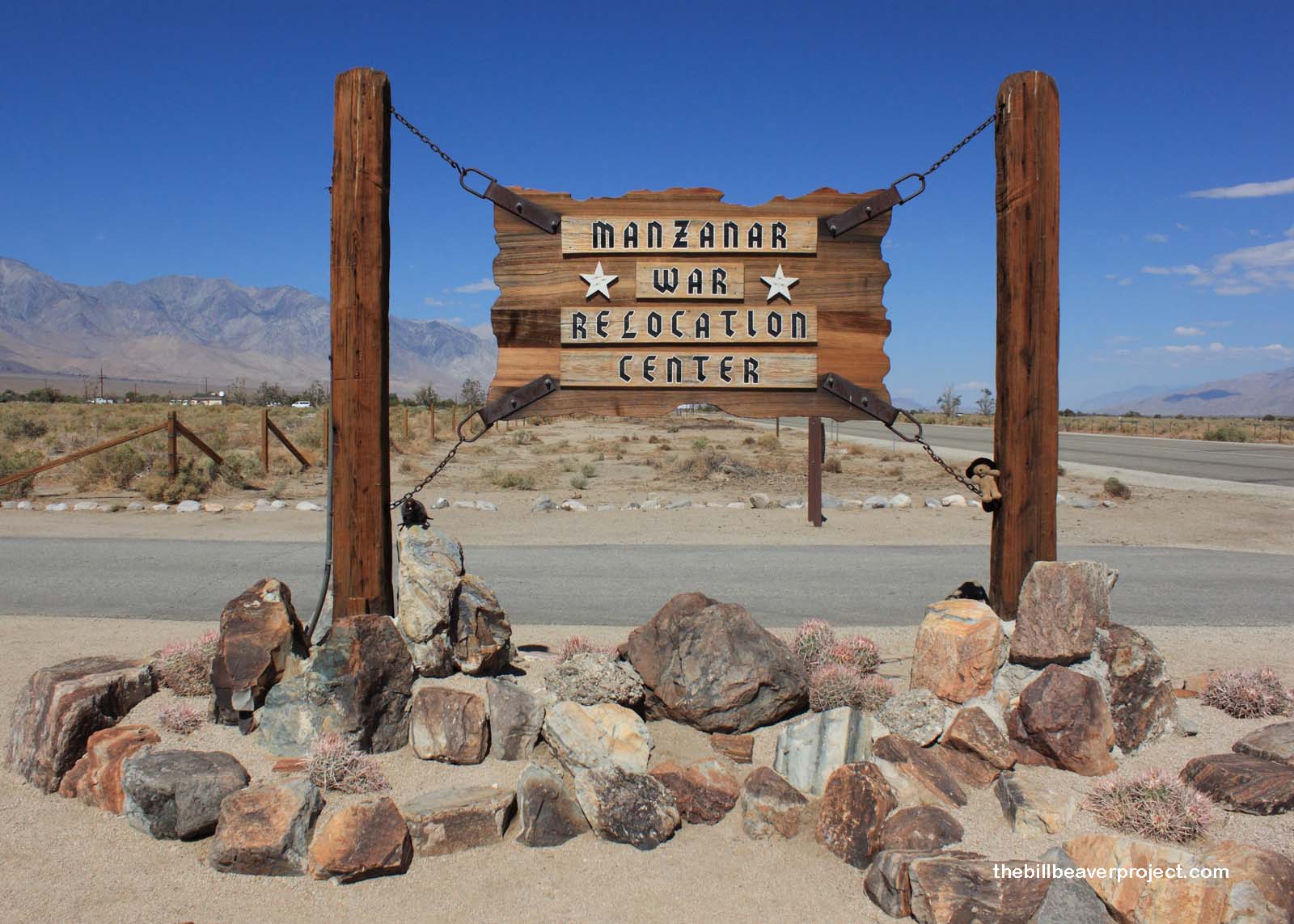 |
So, we set off into Inyo County, exploring some of the landmarks along the way, like Manzanar War Relocation Center. Set against the eastern Sierras, I thought this was a beautiful place to stop, but Woodchuck, who has had little experience in landmark hunting, wondered why anyone would want to visit such a remote, desert place. It wasn’t for the apples, even though “manzanar” is Spanish for “apple orchard,” and indeed, there were plenty of those. However, people come here to remember, so the crimes committed at Manzanar may never be repeated.
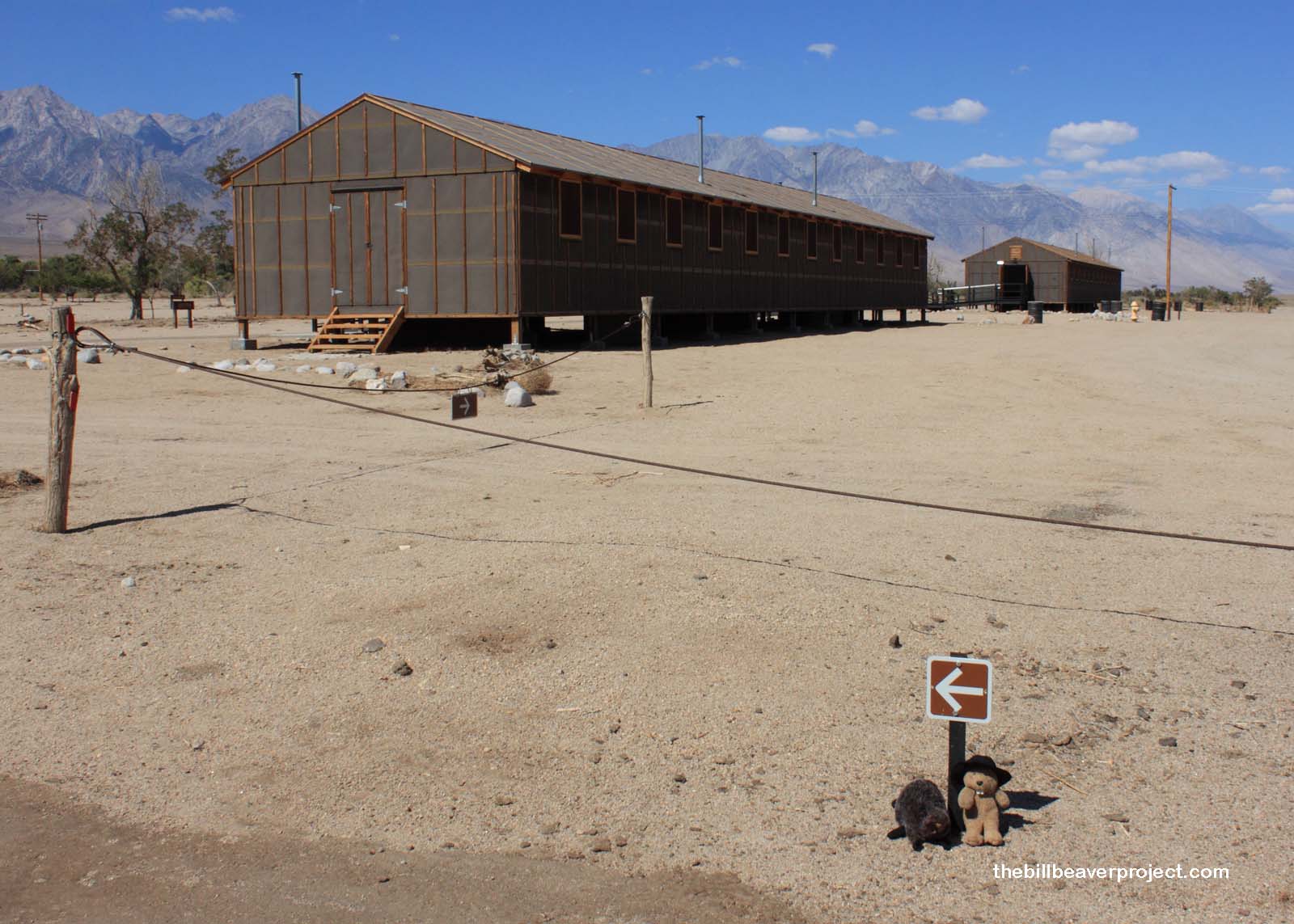 |
Following the attack on Pearl Harbor, the US government decided it no longer trusted anyone Japanese and issued a decree to round up at least 120,000 of them and ship them to the desert until the end of the war. 10,000 of these people ended up at Manzanar, two thirds of whom were not only US citizens but also under the age of 18! They were crammed into tiny barracks with up to eight people per room, which shocked Woodchuck, whose home in Beaver is quite large. Many lingered here as their own country’s prisoners of war for three years!
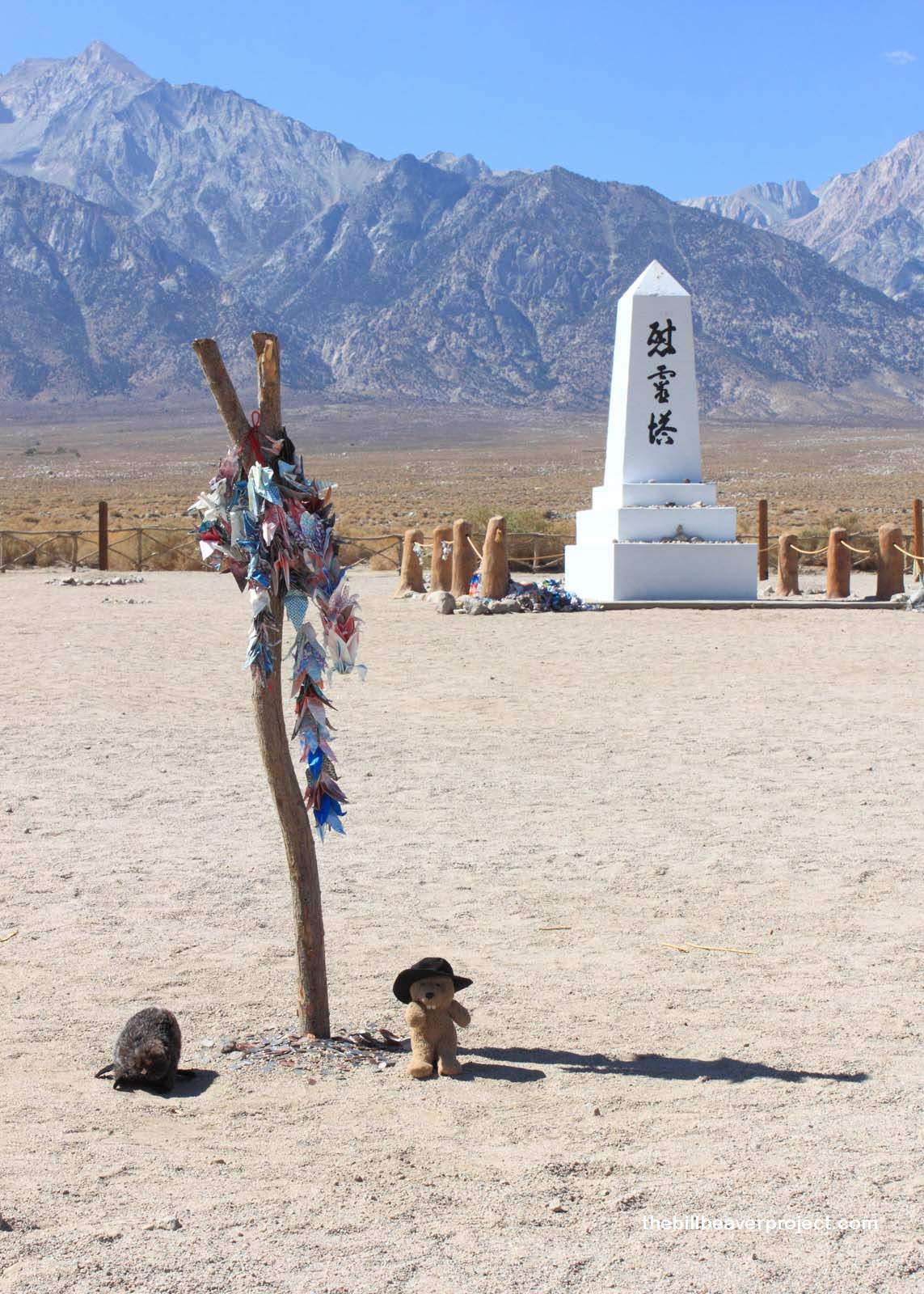 |
My Korean upbringing notwithstanding, I would list these mass incarcerations of Japanese-Americans among the three greatest shames of American history. However, as I explained to Woodchuck while dragging him the mile or so from the visitor center to the Soul Consoling Tower, great things can come from terrible ones. In particular, the bonds of shared adversity can form, revive, and strengthen family and community ties!
Take the Manzanar Committee, for instance, which sponsors a yearly pilgrimage to the tower to honor those who died in the camps and those resilient enough to reboot their lives beyond the fences. Their fight for the continued maintenance of the site, on lease from the Los Angeles Department of Water and Power, not only preserves a memory of the foolishness of wartime hysteria, but also reminds each of us of the power of our own spirits to prevail when external forces seek to crush them. Meanwhile, Woodchuck had long since left me to my reflection and returned to the air conditioned car.
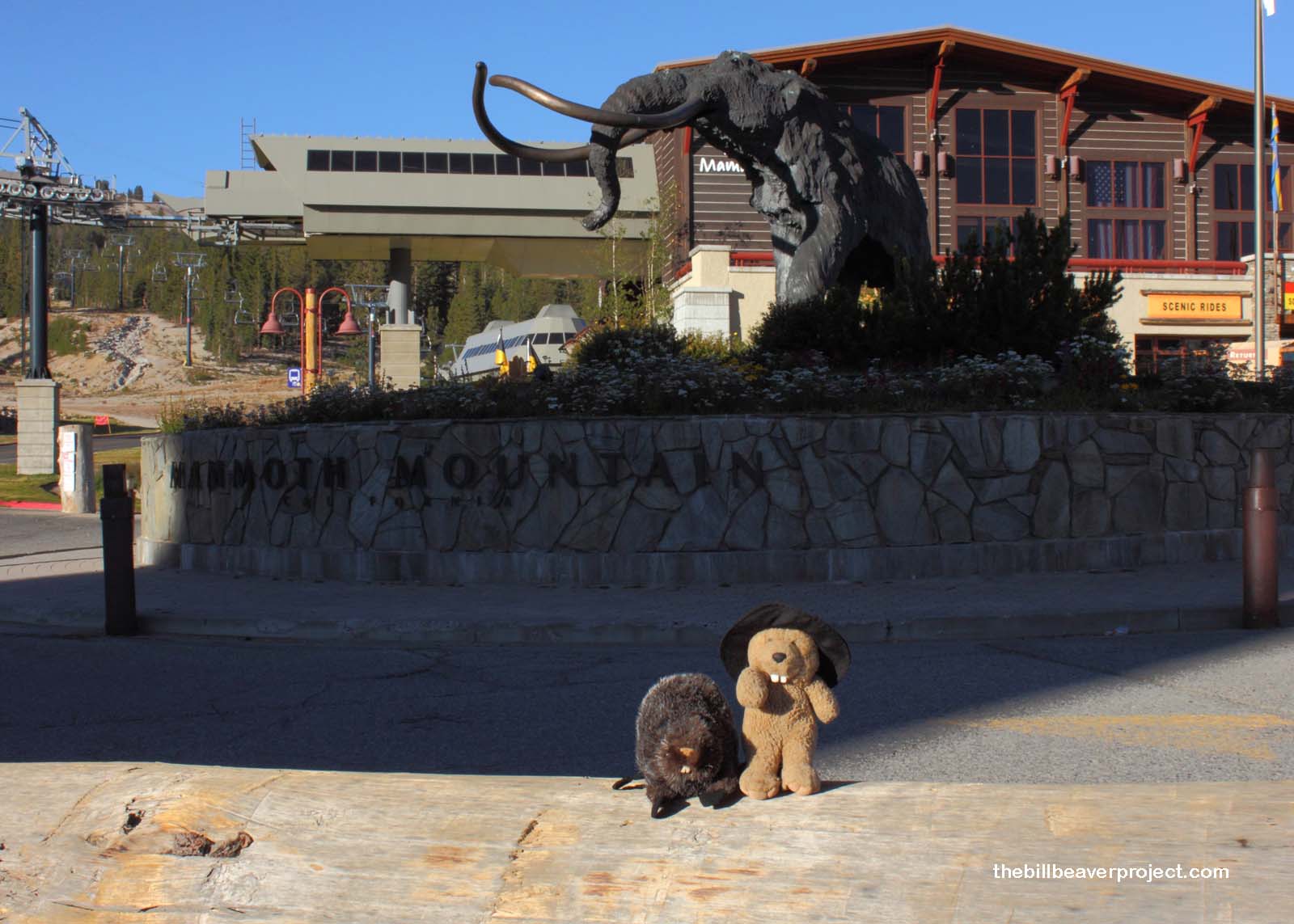 |
A few more hours on the road, and we arrived in Mammoth Lakes, home to one of California’s most well known ski towns. As we rose in elevation through the conifer forests, a certain pressing doubt entered both of our minds: in a conifer forest, would there be leaves to celebrate Lastleaf? Having come all this way, it was surely too late to turn back now, and it happened to be National Public Lands Day, which meant free entrance into the monument!
As always, I wished to stop at the entrance and take a picture with the monument sign. While I set up the tripod, Woodchuck called out to me, asking whether he could take home one of the pine tree saplings. I said of course not! We were in a national monument, and it was illegal. It was too late, though; he had already plucked one from the ground! I was horrified, but he said if he didn’t take it, someone else would, or else a fire would destroy it. And he headed back to the car, perfectly, stubbornly satisfied with himself! What could I do?
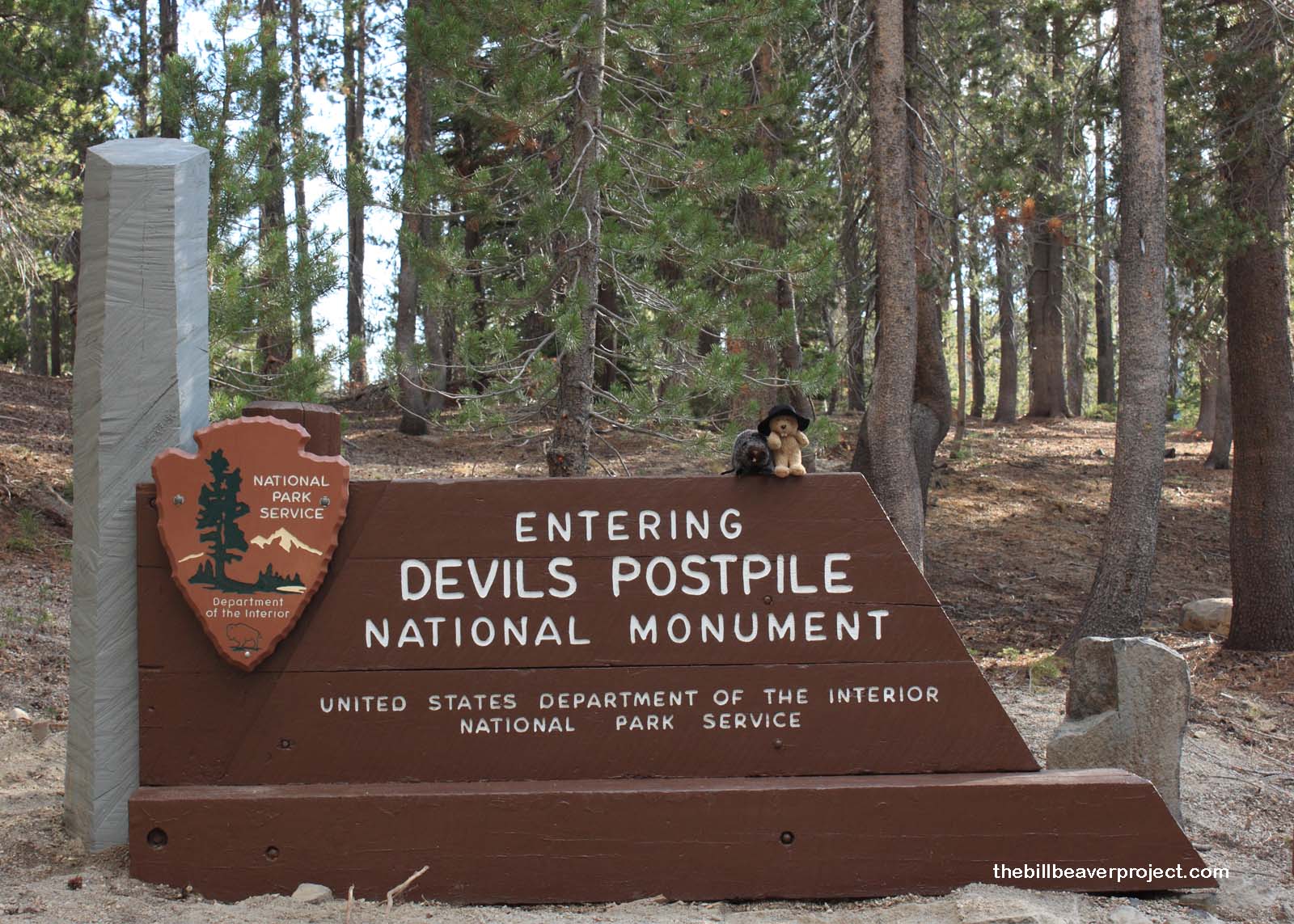 |
Technically, he had plucked it about fifty feet outside the monument border, so I couldn’t use the legal aspect against him, but I hope he truly knows how to take care of a baby pine tree. They’re notoriously difficult to germinate, and I it would look much better here than at his home by the canal. We’re very different beavers, Woodchuck and I, but we’re family. Sometimes, family members must agree to disagree.
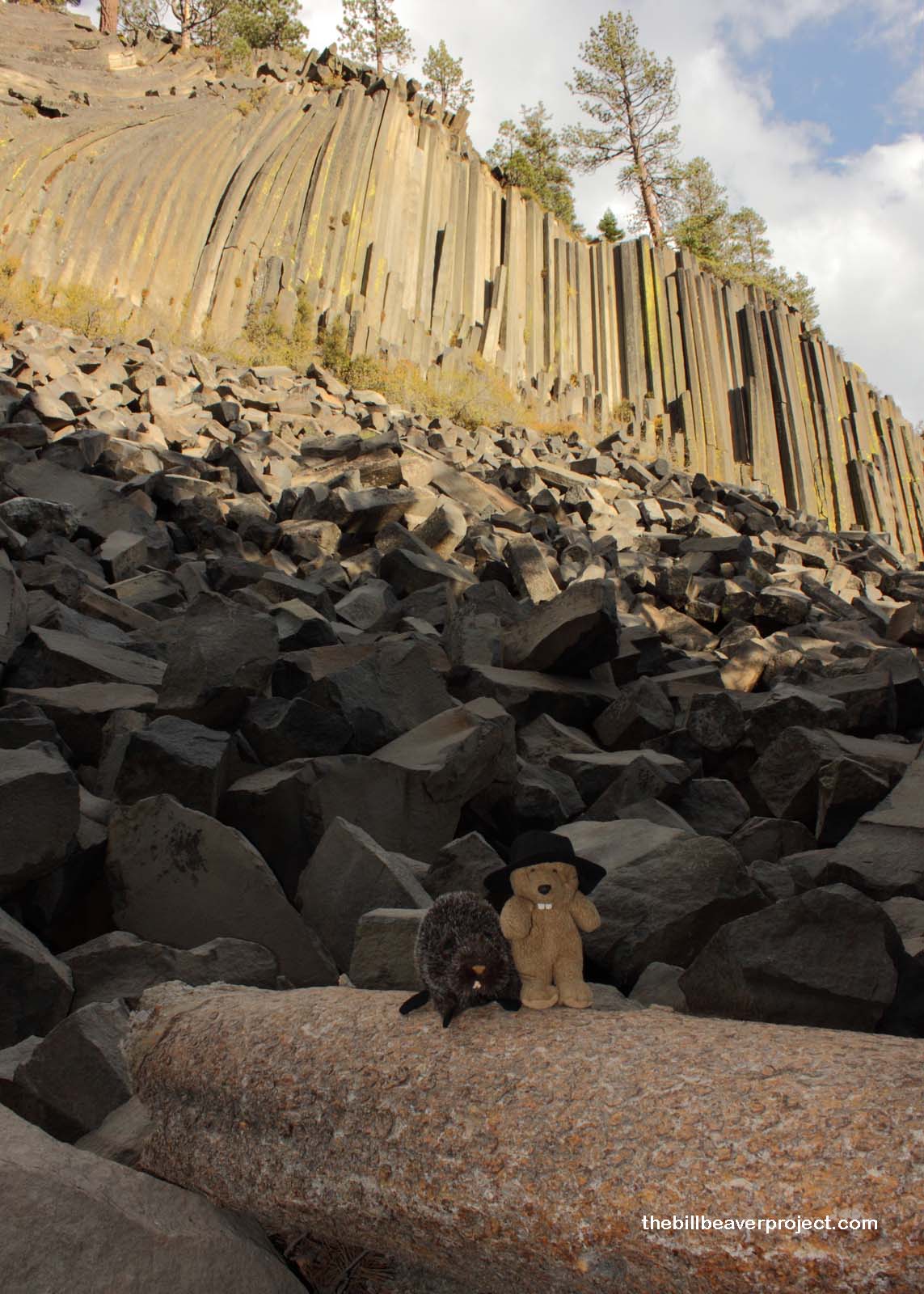 |
Devil’s Postpile National Monument is tiny, only two and a half miles long by half a mile wide, which meant there weren’t a ton of things to see in the last remaining hour of sunlight. We still had to hurry, though, since the postpile sits in a river valley! Luckily, the trail to the postpile was only half a mile long. I hurried with Woodchuck as best as I could, but there really was no need to hurry. Though we arrived in the shadow, the monument still stood out in stark relief!
The postpile is made of columnar basalt, like Devil’s Tower, the Giant’s Causeway, and many other sites around the world. It was once a lake of basalt lava, which cooled slowly, then cracked as its liquid state shrank into a solid one. Over time, earthquakes and glaciers unearthed and polished the postpile to stand clear for all to see! I wanted to examine it more closely, and though there was no climbing on the talus, there was a trail to the top!
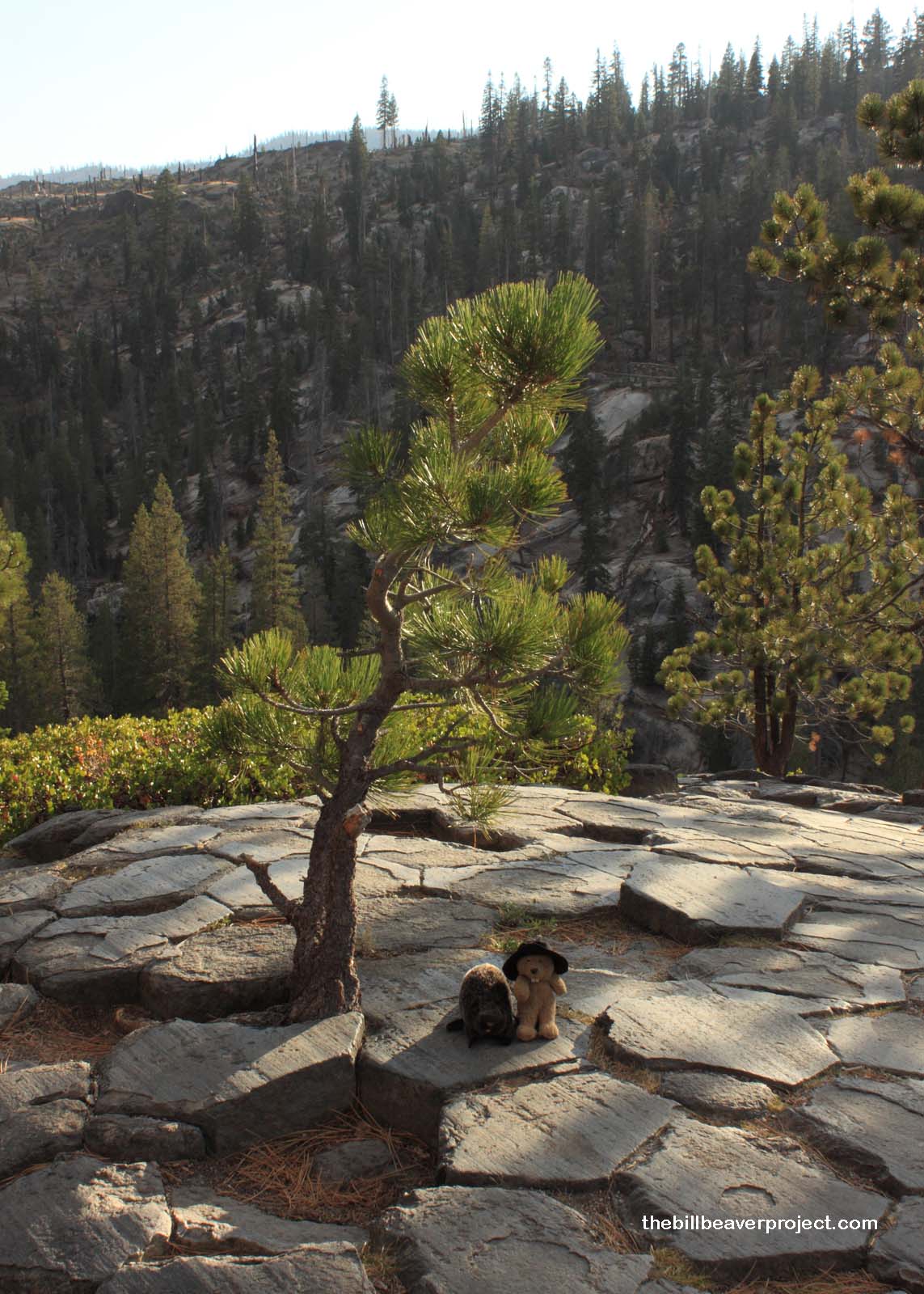 |
The trail was not a big challenge, and soon, we were standing atop the polished honeycomb surface of the postpile. The heights left Woodchuck a little apprehensive, but the trees kept much of the view—and the drop—hidden from sight. Nonetheless, we were able to enjoy the late sun over the Sierras on one side and observe the residue of the Rainbow Fire, which torched 82% of the monument in 1992, on the other. There were a few other folks on this trail, but it could hardly be considered crowded. I’d say that was because we’d arrived between the summer tourist season and the winter ski season! This is the best time of year to travel!
After soaking in the scenery for a while, we descended the other side of the postpile, debating whether to attempt the four-mile round-trip trek to Rainbow Falls before dark. However, remembering my Camino pace of three miles per hour and with only 45 minutes of daylight left, we agreed it would be safer to return to the car.
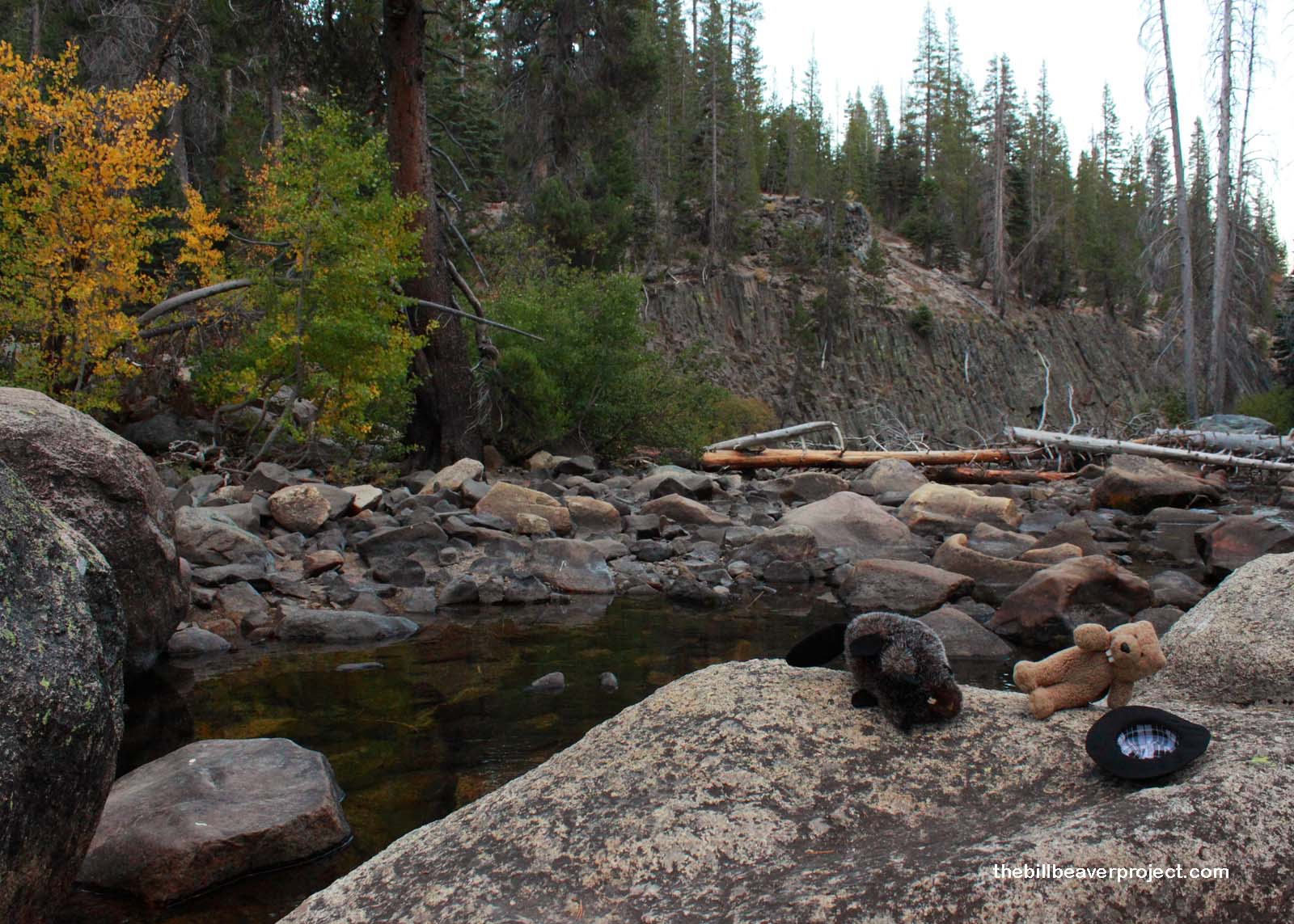 |
That’s when Woodchuck spotted the sparse, yellow leaves on the banks of the San Joaquin River! Lastleaf! Gathering our bearings, we sauntered down to the river and launched ourselves into copious amounts of frolic, leaping from boulder to boulder, performing cannonballs into the shallow pool, and shaking down leaves from the trees. This is how beavers normally celebrate the passing of the outdoor season into a long, indoor wait for Firstbud. I’m glad I spent it with Woodchuck, who, I think, works so much he sometimes forgets the importance of frolic.
As darkness fell, we made our way out of the monument as the full moon drifted among the wispy clouds, a stunningly beautiful sight. We stayed in Mammoth Lakes, and Woodchuck generously bought dinner. You know, I was a little apprehensive at first about bringing someone else with me on this journey after almost two years of traveling solo, but now I see it really isn’t so bad. Woodchuck may be stubborn sometimes, but he’s a good sport. With his help, Lastleaf 2012 was a great success!
Happy Lastleaf!

